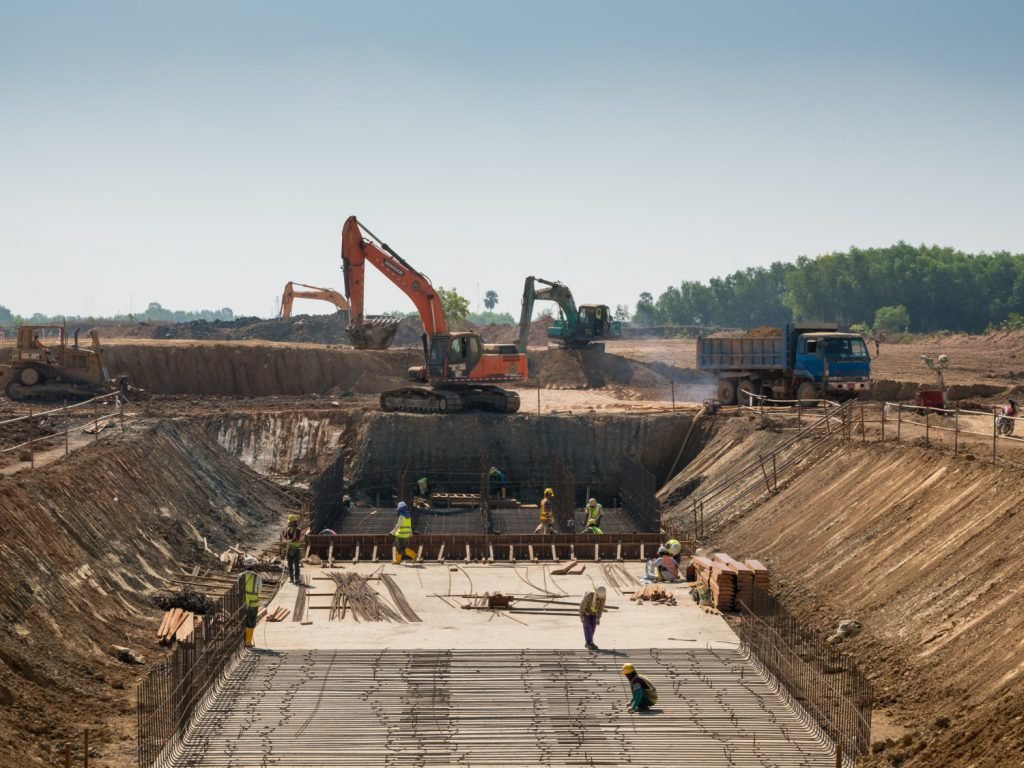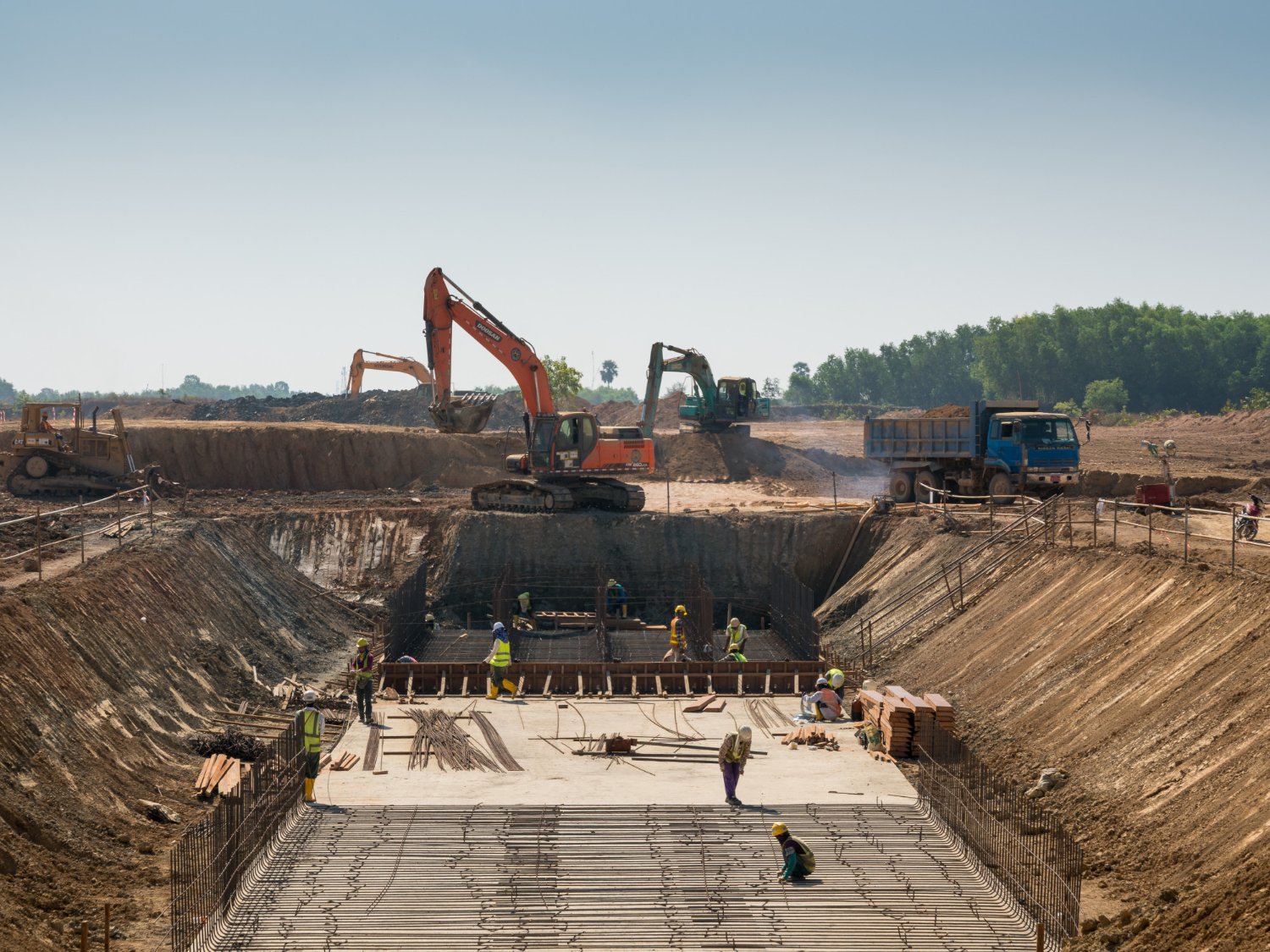Challenges faced by autonomous construction vehicles and equipment
Autonomous construction vehicles and equipment encounter numerous challenges in their operational deployment. One significant hurdle is the need for high-precision mapping and real-time data processing to navigate complex construction sites effectively. Ensuring accurate sensor data interpretation under varying environmental conditions remains a critical obstacle for seamless autonomous operations in the construction industry.

Moreover, the integration of autonomous vehicles with existing manual machinery and workforce poses another challenge. Coordinating the interaction between autonomous and human-operated equipment requires meticulous planning and implementation to maximize efficiency without compromising safety on construction sites. Balancing the autonomous capabilities with human oversight is essential to address potential conflicts and ensure smooth collaboration between both types of machinery.
Advantages of using autonomous construction vehicles and equipment
Autonomous construction vehicles and equipment offer increased efficiency on worksites due to their ability to work around the clock without the need for breaks. This continuous operation can lead to faster completion of projects and improved productivity levels. Moreover, these autonomous machines can be programmed to work with precision and accuracy, reducing the margin of error in tasks such as excavation, grading, and material handling.
Another advantage of autonomous construction vehicles and equipment is their potential to enhance safety on construction sites. By minimizing the need for human operators in hazardous environments, the risk of accidents and injuries can be significantly reduced. These machines are equipped with advanced sensors and cameras that can detect obstacles and ensure safe navigation, making them valuable assets in promoting a safer work environment.
Impact of autonomous construction vehicles and equipment on jobs
Autonomous construction vehicles and equipment are revolutionizing the construction industry, leading to a gradual shift in the way tasks are completed on job sites. With the introduction of these autonomous technologies, there is a growing concern about the potential impact on jobs traditionally carried out by human operators. As these machines become more advanced and capable of performing tasks autonomously, there is a possibility that certain roles may become redundant, leading to a changing landscape in the job market within the construction sector.
However, it is important to note that while some jobs may be at risk of displacement due to the integration of autonomous construction vehicles and equipment, new opportunities are also emerging in the industry. The deployment of these advanced technologies requires skilled technicians and operators to oversee and maintain the machines, as well as engineers and software developers to continue innovating and improving autonomous systems. As the industry transitions towards automation, there is a growing demand for workers with expertise in operating, maintaining, and enhancing autonomous construction vehicles and equipment.
Safety considerations with autonomous construction vehicles and equipment
When implementing autonomous construction vehicles and equipment, safety considerations are paramount. One key aspect is ensuring that these autonomous machines are equipped with advanced sensors and perception systems to detect potential hazards in real-time. Additionally, robust cybersecurity measures must be in place to prevent unauthorized access or potential hacking of the autonomous systems, which could compromise safety on the job site.
Furthermore, regular maintenance and servicing of autonomous construction vehicles are crucial to ensure optimal performance and to minimize the risk of malfunctions that could lead to accidents. Operators and site personnel must also receive comprehensive training on how to interact and work safely around autonomous machines to prevent accidents and ensure a smooth operation. By prioritizing safety considerations, the construction industry can harness the full potential of autonomous vehicles and equipment while safeguarding the well-being of workers and the efficiency of construction projects.
Technological advancements in autonomous construction vehicles and equipment
The technological advancements in autonomous construction vehicles and equipment have revolutionized the way construction tasks are carried out. These vehicles are now equipped with sophisticated sensors, GPS systems, and advanced software that enable them to navigate construction sites with precision and efficiency. These advancements have significantly improved the accuracy and speed of construction projects, reducing human error and increasing overall productivity on the job site.
Furthermore, autonomous construction vehicles are now capable of performing complex tasks autonomously, such as grading, excavation, and material handling. With the integration of artificial intelligence and machine learning algorithms, these vehicles can analyze data in real-time and make informed decisions to optimize performance and streamline operations. As technology continues to evolve, we can expect to see even more innovative features implemented in autonomous construction vehicles, further enhancing their capabilities and transforming the construction industry.
• Autonomous construction vehicles are equipped with sophisticated sensors and GPS systems
• Advanced software enables precise navigation on construction sites
• Accuracy and speed of construction projects have significantly improved
• Reduction in human error has increased overall productivity on job sites
• Vehicles can perform complex tasks autonomously such as grading, excavation, and material handling
• Integration of artificial intelligence and machine learning algorithms allows for real-time data analysis
• Informed decisions optimize performance and streamline operations
• Expect to see more innovative features implemented in autonomous construction vehicles
Environmental benefits of autonomous construction vehicles and equipment
The integration of autonomous construction vehicles and equipment in the construction industry brings forth various environmental benefits. One key advantage is the reduction of fuel consumption and carbon emissions. These autonomous machines are designed to optimize their routes and operations efficiently, leading to less fuel wastage and lower greenhouse gas emissions. Additionally, the use of electric-powered autonomous equipment further contributes to a cleaner environment by eliminating harmful exhaust fumes associated with traditional diesel-powered machinery.
Moreover, autonomous construction vehicles and equipment promote better resource management. By utilizing sensors and data analytics, these machines can accurately assess the amount of material needed for a specific task, thus reducing unnecessary waste. This optimized resource allocation not only helps in conserving raw materials but also minimizes the overall environmental impact of construction activities. The precision and efficiency of autonomous equipment result in a more sustainable approach to construction practices, aligning with the industry’s increasing focus on environmentally responsible solutions.
Cost-effectiveness of autonomous construction vehicles and equipment
Autonomous construction vehicles and equipment have been increasingly recognized for their cost-effectiveness in various construction projects. By reducing the need for manual labor and increasing operational efficiency, these autonomous machines can significantly lower overall project costs. The precision and accuracy of autonomous systems also lead to reduced material waste, further contributing to cost savings for construction companies.
Additionally, autonomous construction vehicles and equipment offer the advantage of improved productivity and faster project completion times. With the ability to work around the clock without the constraints of human factors such as fatigue, these autonomous machines can help accelerate construction timelines and deliver projects on schedule. This increased efficiency directly translates to cost savings for construction companies, making autonomous technology an attractive investment for the industry.
Regulatory hurdles for autonomous construction vehicles and equipment
Navigating the regulatory landscape for autonomous construction vehicles and equipment poses a significant challenge for industry stakeholders. As technologies rapidly evolve, existing regulations often struggle to keep pace, creating ambiguity around safety standards, liability issues, and operational guidelines. This discrepancy between innovation and regulation can hinder the widespread adoption of autonomous solutions in the construction sector.
Moreover, the lack of standardized regulations across different regions and countries complicates the deployment of autonomous construction vehicles and equipment on a global scale. Differing legal frameworks, certification processes, and compliance requirements further exacerbate the regulatory hurdles faced by manufacturers and operators. To overcome these challenges, collaboration between governments, industry experts, and regulatory bodies is essential to establish cohesive guidelines that ensure the safe and effective integration of autonomous technologies in construction practices.
Potential applications of autonomous construction vehicles and equipment
Autonomous construction vehicles and equipment hold vast potential for revolutionizing various aspects of the construction industry. These advanced technologies can be utilized in tasks such as excavation, grading, material handling, and even building construction. By leveraging autonomous vehicles, construction companies can improve efficiency, accuracy, and safety on job sites. Additionally, autonomous equipment can work around the clock without the limitations of human labor, leading to increased productivity and faster project completion.
Moreover, the applications of autonomous construction vehicles and equipment extend beyond traditional construction practices. These innovative tools can also be employed in hazardous environments or areas that are challenging for human workers to access. By utilizing autonomous vehicles in these scenarios, companies can ensure the safety of their employees while still achieving project objectives efficiently. The flexibility and adaptability of autonomous construction equipment make them invaluable assets in addressing a wide range of construction challenges.
Integration of artificial intelligence in autonomous construction vehicles and equipment
Artificial intelligence (AI) plays a crucial role in the development and operation of autonomous construction vehicles and equipment. By harnessing AI capabilities, these machines can make real-time decisions, adjust to changing environments, and optimize their performance efficiently. AI algorithms enable autonomous vehicles to interpret data from various sensors, cameras, and GPS systems to navigate construction sites, detect obstacles, and execute tasks with precision.
With the integration of AI, autonomous construction vehicles and equipment can improve productivity, reduce errors, and enhance safety on job sites. These intelligent machines can analyze complex data patterns, learn from past experiences, and adapt their behavior to maximize efficiency. AI-driven automation allows for better resource management, increased accuracy in construction tasks, and ultimately leads to cost savings for construction companies.
Training requirements for operators of autonomous construction vehicles and equipment
Training requirements for operators of autonomous construction vehicles and equipment are evolving in tandem with advancements in technology. The traditional skills needed for operating non-autonomous vehicles are being supplemented with knowledge of artificial intelligence, data analysis, and system troubleshooting. Operators must now understand how to interpret data outputs, navigate user interfaces, and ensure the safety of autonomous equipment in a variety of construction environments.
Moreover, training programs for operators of autonomous construction vehicles and equipment also emphasize the importance of regular software updates, maintenance protocols, and emergency response procedures. As autonomous technologies continue to integrate into the construction industry, operators must possess a broader skill set that includes adaptability to changing software functionalities and troubleshooting capabilities to address potential technical issues on the job site.
Future trends in the development of autonomous construction vehicles and equipment
As technology continues to evolve, the future of autonomous construction vehicles and equipment looks promising. One key trend that is expected to shape the development of these autonomous systems is the integration of advanced sensors and artificial intelligence algorithms. By leveraging high-precision sensors and cutting-edge AI capabilities, autonomous construction vehicles can enhance their efficiency and accuracy, leading to more precise and productive operations on construction sites.
Another significant trend in the development of autonomous construction vehicles and equipment is the emphasis on connectivity and data sharing. Through the implementation of robust communication protocols and cloud-based platforms, autonomous vehicles can exchange real-time data with other machines and central control systems. This connectivity enables seamless coordination between autonomous vehicles, enhances project planning and execution, and paves the way for more integrated and efficient construction practices in the future.
Case studies showcasing successful implementation of autonomous construction vehicles and equipment
One notable case study that highlights the successful implementation of autonomous construction vehicles and equipment is the project undertaken by a major construction company in collaboration with a leading technology firm. In this initiative, autonomous dump trucks were deployed at a large-scale construction site to transport materials from one location to another. The vehicles were equipped with advanced sensors and cameras that allowed them to navigate the site efficiently and safely, significantly reducing the time and manpower required for material transportation.
Another compelling example of the successful integration of autonomous construction vehicles is seen in a bridge construction project where self-driving excavators were utilized for earthmoving tasks. These autonomous machines were programmed to follow precise excavation plans provided by the project engineers, ensuring accuracy and adherence to design specifications. By employing these advanced technologies, the construction team was able to streamline the excavation process, minimize errors, and enhance overall project efficiency.
Additional Resources:
[catlist categorypage=”yes”]
[newsletter]
Table of Contents
Categories:
[categories orderby=name]
Latest Posts:
[sbs_latest_posts]
FAQs:
What are some challenges faced by autonomous construction vehicles and equipment?
Some challenges include technological limitations, regulatory hurdles, and the need for operator training.
What are the advantages of using autonomous construction vehicles and equipment?
Advantages include increased efficiency, improved safety, reduced labor costs, and the ability to work in hazardous environments.
How do autonomous construction vehicles and equipment impact jobs in the construction industry?
While autonomous technology may lead to changes in job roles, it can also create new opportunities for skilled workers in maintenance and oversight.
What safety considerations should be taken into account with autonomous construction vehicles and equipment?
Safety considerations include cybersecurity risks, potential malfunctions of autonomous systems, and the need for fail-safe mechanisms.
What are some technological advancements in autonomous construction vehicles and equipment?
Technological advancements include the use of LiDAR, GPS, cameras, and sensors to navigate and operate autonomously.
How do autonomous construction vehicles and equipment benefit the environment?
Autonomous vehicles can reduce fuel consumption, emissions, and noise pollution, leading to a more sustainable construction industry.
Are autonomous construction vehicles and equipment cost-effective?
While initial costs may be higher, autonomous technology can lead to long-term cost savings through increased efficiency and reduced labor expenses.
What regulatory hurdles exist for autonomous construction vehicles and equipment?
Regulatory hurdles include safety standards, liability issues, and the need for standardized guidelines for autonomous technology in the construction industry.
What are some potential applications of autonomous construction vehicles and equipment?
Potential applications include excavation, grading, paving, material handling, and building construction in various construction projects.
How is artificial intelligence integrated into autonomous construction vehicles and equipment?
Artificial intelligence is used to analyze data, make decisions, and learn from past experiences to improve the performance of autonomous construction vehicles and equipment.
What training requirements are needed for operators of autonomous construction vehicles and equipment?
Operators need to be trained in the operation, maintenance, and troubleshooting of autonomous systems, as well as safety protocols and emergency procedures.
What are some future trends in the development of autonomous construction vehicles and equipment?
Future trends may include increased integration of AI, improved communication between autonomous vehicles, and the development of more specialized autonomous construction equipment.
Can you provide some case studies showcasing successful implementation of autonomous construction vehicles and equipment?
Yes, case studies can highlight real-world examples of how autonomous technology has improved efficiency, safety, and productivity in construction projects.


